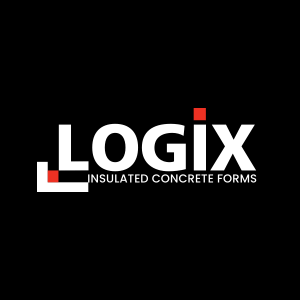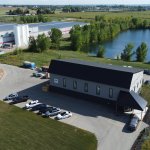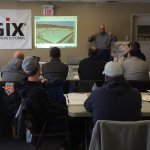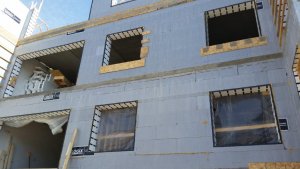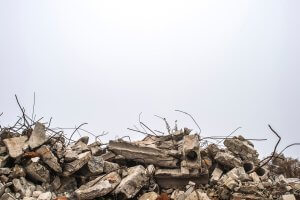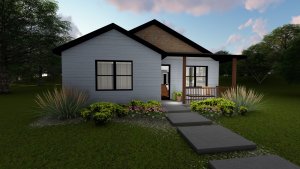Insulated Concrete Forms (ICFs) like Logix PRO are rapidly emerging as a more durable, energy-efficient, constructible, and sustainable alternative to conventional light-wood and light-gauge steel framing. But did you know that despite the sophisticated ways they improve buildings’ performance, ICF systems are surprisingly simple?
This post will take a look at the 2 primary components of ICFs and examine their manufacturing process.
Typical Logix ICF Block Composition
Logix PRO series ICF blocks are made up of 2 key elements: flame-resistant insulative panels and a series of webs between them. The standard, 48” x 16” x 11¼” blocks weigh about 5 lbs, with the foam panels making up half the weight and the webs comprising the other half.
The insulative panels effectively sandwich the wall’s concrete core, while the webs hold the panels together and provide support for rebar. Together, these 2 elements create a resilient, energy-efficient wall assembly, which is easy to design and build.
2 Flame-resistant EPS Foam Panels
The Logix PRO series ICF blocks are made with Expanded Polystyrene (EPS) insulative panels. EPS insulation comprises a closed-cell plastic that’s 98% air. This composition is in stark contrast with the ubiquitous Extruded Polystyrene (XPS), which uses chlorofluorocarbons (CFCs), hydrofluorocarbons (HFCs), and hydrochlorofluorocarbons (HCFCs) as the blowing agents.
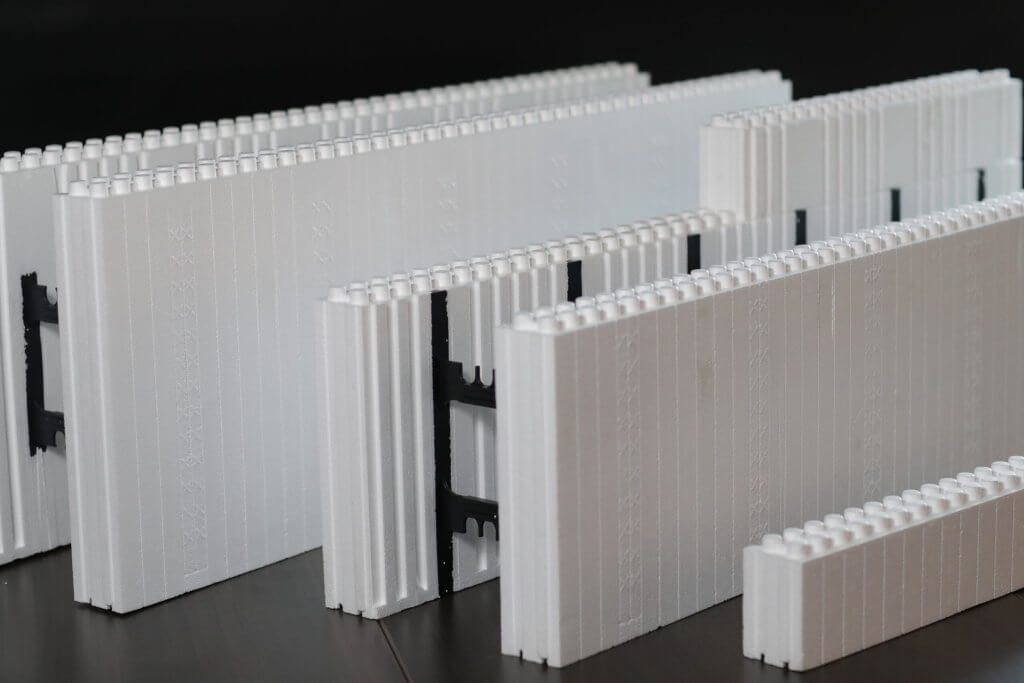
Because EPS does not contain any of these harmful greenhouse gases, it has up to 36 times less embodied carbon per square foot than the leading XPS brand. EPS is also easily recyclable and simple to reintroduce into the manufacturing process.
6 Polypropylene Webs
In the Logix PRO series, the 2 foam panels are separated by 6 robust polypropylene webs, which also facilitate the placement of various rebar patterns per CAN/CSA A23.1.
The webs’ dimensions depend on the chosen width of the concrete core, as they span this distance between the 2 foam panels. The webs are placed 8 inches on center horizontally and 16 inches on center vertically in every block.
The recycled, post-consumer polypropylene polymer used to manufacture these webs has a tensile strength of 3,500 PSI and a flexural strength of 3,400 PSI. In addition, because the webs make up half the blocks’ weight, each standard Logix PRO block contains 50% recycled material by weight.

Don't miss a thing!
Subscribe for the latest in the ICF world, exclusive content, insider industry news and limited edition webcasts.
How are ICFs Manufactured?
As their name suggests, Expanded Polystyrene (EPS) foam panels are made by expanding polystyrene resin.
First, though, the resin is used to create tiny polystyrene beads. These beads are then infused with a blowing agent — air — and exposed to steam inside the expander machine’s chamber. The steam causes the beads to enlarge — a step that forms the EPS material.
This EPS material is then placed into the Shape Molding Machine, where steam binds the beads together and fuses them with the pre-loaded polymer webs. And that’s that — the Logix ICF block is now complete and ready for the job site!
Wrapping it up
Logix PRO series ICF blocks are a simple system comprising 2 EPS foam boards and 6 polymer webs. Despite their simplicity, these ICFs give structures superb levels of disaster resilience and ultra-high-energy performance.
Thanks to their manufacturing process and the materials used in their production, these blocks are also sustainable. They contain 50% recycled material by weight, and their embodied carbon level is 36 times lower than that of leading XPS brands.
